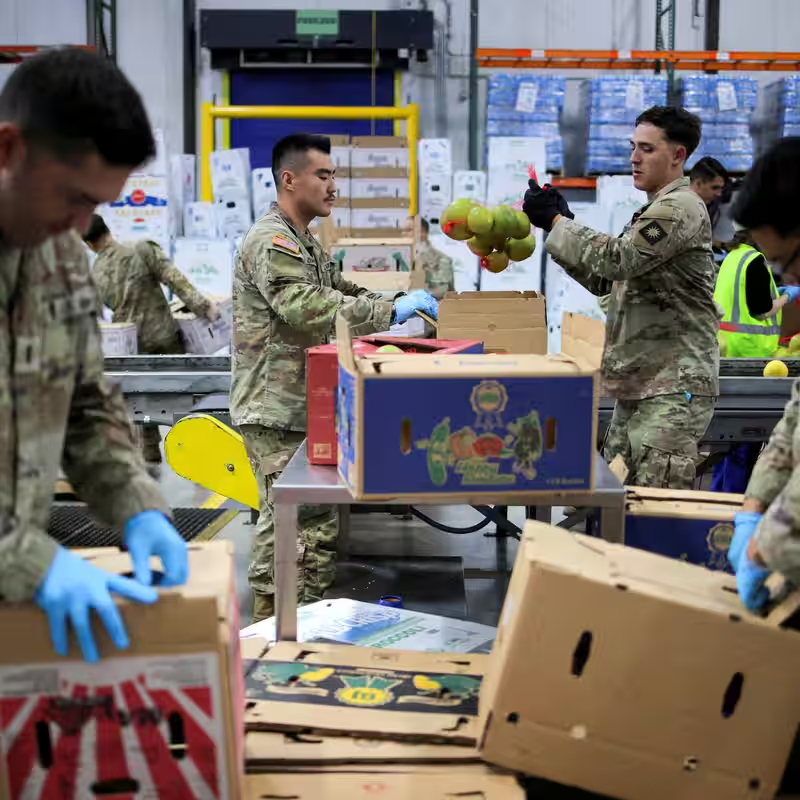With the federal government shut down and emergency reserves untouched, the Supplemental Nutrition Assistance Program (SNAP) is set to run out of funds on Saturday, November 1, 2025—leaving 42 million Americans in limbo. In response, states across the country are taking unprecedented steps to fill the gap, from tapping emergency budgets to deploying National Guard troops .
SNAP Benefits on the Brink
SNAP, which provides an average of $187 per month to roughly 1 in 8 Americans, has been a cornerstone of the U.S. social safety net for decades. But with Congress unable to pass a funding bill and the Trump administration refusing to access $3 billion in available emergency funds, the program faces its first total lapse in modern history .
More than two dozen states—led by Democratic attorneys general and governors—have filed a federal lawsuit demanding that the U.S. Department of Agriculture use those emergency reserves to sustain at least partial benefits. A judge’s ruling is pending.
How States Are Stepping In
Facing a humanitarian crisis, governors are acting fast—and creatively. Their responses fall into three main categories: emergency funding, emergency declarations, and direct logistical support.
1. Emergency State Funding
Over a dozen states are redirecting their own dollars to keep food flowing:
- California: $80 million to food banks
- Illinois: $20 million split between emergency reserves and human services
- Vermont: $6.3 million to fully cover SNAP for two weeks
- Hawaii: $100 million from TANF surplus to ease household budgets
- Missouri: $10.6 million for senior meal programs, plus $5 million for food banks
2. Emergency Declarations Unlock Aid
Governors in both parties are declaring states of emergency to bypass red tape and access contingency funds:
- New York: $106 million total committed after Gov. Hochul’s emergency order
- Virginia: Launched “Virginia Emergency Nutrition Assistance” at $37.5M/week
- New Mexico: Loading $30M in health funds onto EBT cards (≈30% of usual benefit)
- Louisiana: $147M from health department for vulnerable groups—children, elderly, disabled
3. Guard Deployments & Community Mobilization
Anticipating overwhelmed food banks, several states are mobilizing personnel:
- California: Activated National Guard and California Volunteers for food packing
- South Carolina: Deployed State Guard volunteers to manage traffic and distribution
- Colorado: Launched public donation drive via Feeding Colorado; seeks $10M in legislative aid
Not All States Can Respond
Despite the urgency, some governors say they lack the capacity to act. Maryland’s Gov. Wes Moore cited budget constraints and uncertainty over federal reimbursement. Arkansas’s Gov. Sarah Huckabee Sanders called a state-run SNAP alternative “logistically impossible” while federal systems are offline .
| State | Action Taken | Funding Committed |
|---|---|---|
| California | Food bank support + Guard deployment | $80M |
| New York | Emergency declaration + food aid | $106M |
| Vermont | Full SNAP replacement (2 weeks) | $6.3M |
| Louisiana | Health funds for vulnerable populations | $147M |
| Arkansas | No state program possible | $0 |
What’s Next for SNAP Recipients?
For millions of families, November could mean empty pantries. While some will receive partial aid through state stopgaps, others—especially in states without emergency plans—may rely entirely on food banks already straining under record demand.
Advocates warn that even the most robust state efforts are temporary fixes. “This isn’t sustainable,” said one anti-hunger nonprofit director. “SNAP is a federal promise. It shouldn’t depend on your ZIP code.”
Sources
- The New York Times: How States Are Preparing for a Freeze in Federal Food Assistance
- U.S. Department of Agriculture – SNAP Program Overview
- Feeding America – State-by-State Impact Reports




